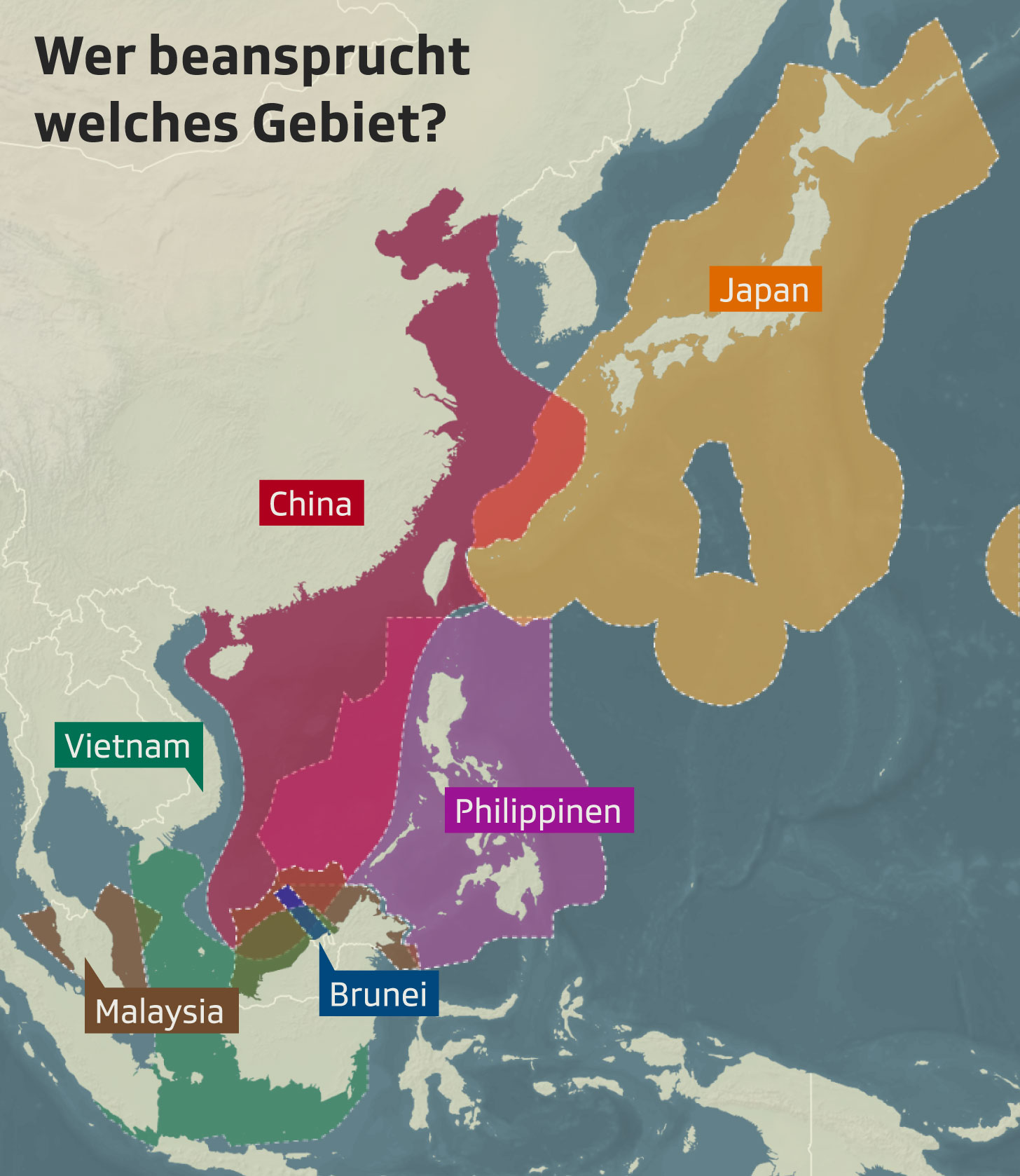New islands are popping up in the South China Sea where there used to be reefs. China is behind these deposits, experts say. Beijing wants to expand its control in the region. The South China Sea is of strategic importance as a shipping route, among other things. International law professor Anna Petrig explains that the Chinese approach is not in line with the law of the sea.
SRF News: Can China continue to build islands while complying with international law?
Anna Petrig: China undertakes this land reclamation and development to develop small rocks into large structures. In part, this is done with several kilometers of airstrips and military infrastructure. And China claims these sea formations are islands and not just rocks. In contrast to islands, rocks do not create large areas of sea for the state.
As a result, China claims sea areas that do not belong to it according to maritime law, but belong to other states, such as the Philippines. China also conducts activities in these sea areas, such as fishing or military exercises, which only a state that has a right to the area is actually allowed to conduct. As a result, China is also violating the rights of other countries.
China has signed the Convention on the Law of the Sea, but obviously does not think much of its rules. Can China be sanctioned?
Well, one way is to take China to court. That’s what the Philippines did in 2013. However, the Convention on the Law of the Sea stipulates that all contracting states must agree to be able to be brought to court. China stayed away from this process. It did not recognize the award.
The arbitral tribunal has largely ruled out China’s claims in the South China Sea.
But the Philippines’ position has been strengthened: the arbitral tribunal has largely ruled out China’s claims in the South China Sea legally invalid. And the arbitral tribunal also clarified what is an island and what is just a rock. This clarification is very important in this context.
The filling of islands has been going on for years. In the meantime, these are also being developed into inhabited areas. How much longer can China go on like this?
It depends, among other things, on how other states react to this policy. Some states, above all the USA, regularly carry out so-called “Freedom of Navigation Operations”. This means that they sail through the sea areas that China claims for itself with warships. In doing so, they are making it clear that they do not recognize Beijing’s claims.
Because China often claims that a certain structure generates a territorial sea of twelve nautical miles. Although that may not be the case in the legal sense, it would mean that third countries may only sail through this territorial sea on a direct course. You are not allowed to stop or perform any manoeuvres.
Sometimes there are almost collisions or incidents.
However, the USA claims that this sea area is high seas. Therefore, they drive through these areas, perform maneuvers and stop. Sometimes a man overboard drill is also done. Washington is doing this to make it clear that the area is open to all states and not part of China. Beijing often does not accept this and sometimes there are almost collisions or incidents during the exercises.
The conversation was conducted by Nico Bär.

